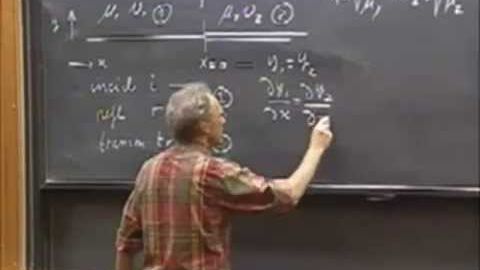Lec 08: 行走的波,聲波和波中的能量 | 8.03 振動和波 (Walter Lewin) (Lec 08: Traveling Waves, Sound Waves, and Energy in Waves | 8.03 Vibrations and Waves (Walter Lewin))
Jyun Siang Gao 發佈於 2021 年 01 月 14 日  沒有此條件下的單字
沒有此條件下的單字US /ˈprɛʃɚ/
・
UK /'preʃə(r)/
- n. (c./u.)壓力;壓;擠;緊迫;催促;壓力;壓力 (物理學);壓力 (印刷);時間壓力;政治壓力;血壓
- v.t.施壓;迫使...做某事
- v.i.參加選舉,當候選人;經得起;站立,站著,起立;繼續有效
- v.t.忍受;容忍;豎放
- n.反對;抵抗;架子;座;觀眾台,看台;貨攤,小店
- v.t./i.(使)處於;立場;態度
US /dɪˈvaɪd/
・
UK /dɪ'vaɪd/
- v.t./i.除以;分開;分類;分配;使分裂;劃分;意見分歧
- n.分界線
US /dɪˈrɛkʃən, daɪ-/
・
UK /də'rekʃn/
- n. (c./u.)(他人指引的)方向;前進的方向;方向

